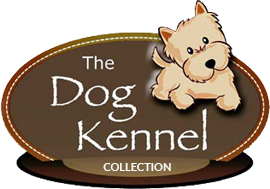Bringing home a new puppy is an exciting experience. Whether it’s your first time as a pet parent or you’re tenth, there is a lot to consider when it comes to properly caring for your new furry friend. From creating a new puppy checklist to guide you through, potty training to obedience training, socialization to exercise and nutrition, it can be a bit overwhelming to think about all that is involved in raising a happy and healthy pup.
At The Dog Kennel Collection in Lancaster, PA, we understand that new puppy ownership can be a challenge, which is why we’re here to help. We offer a wide range of services and products designed to make the transition from pet parent-to-be to experienced pet parent as seamless as possible.
In this comprehensive guide for new puppy owners, we’ll cover everything you need to know about caring for your new pup, from preparing for their arrival to dealing with common behavior issues. Whether you’re just starting your research or already have a new puppy at home, this new puppy checklist will help you ensure that your new friend gets the best possible start in life.
Table of Contents
Before Bringing Your Puppy Home:

Before your new pup arrives, it’s important to prepare your home by following a new puppy checklist. This ensures you’re fully prepared for your new arrival. Here are some things you should do before your new puppy arrives:
- Puppy-proof Your Home
- Secure Loose Wires
- Remove Hazards
- Ensure All Windows & Doors Are Securely Closed
- Gather essential supplies:
- Comfortable bed
- Food and water bowls
- Leash and collar
- Variety of toys
- Crate for training and security
- Establish a feeding schedule suitable for puppies.
- Research and select a reputable veterinarian for your puppy’s healthcare.
Potty Training A New Puppy
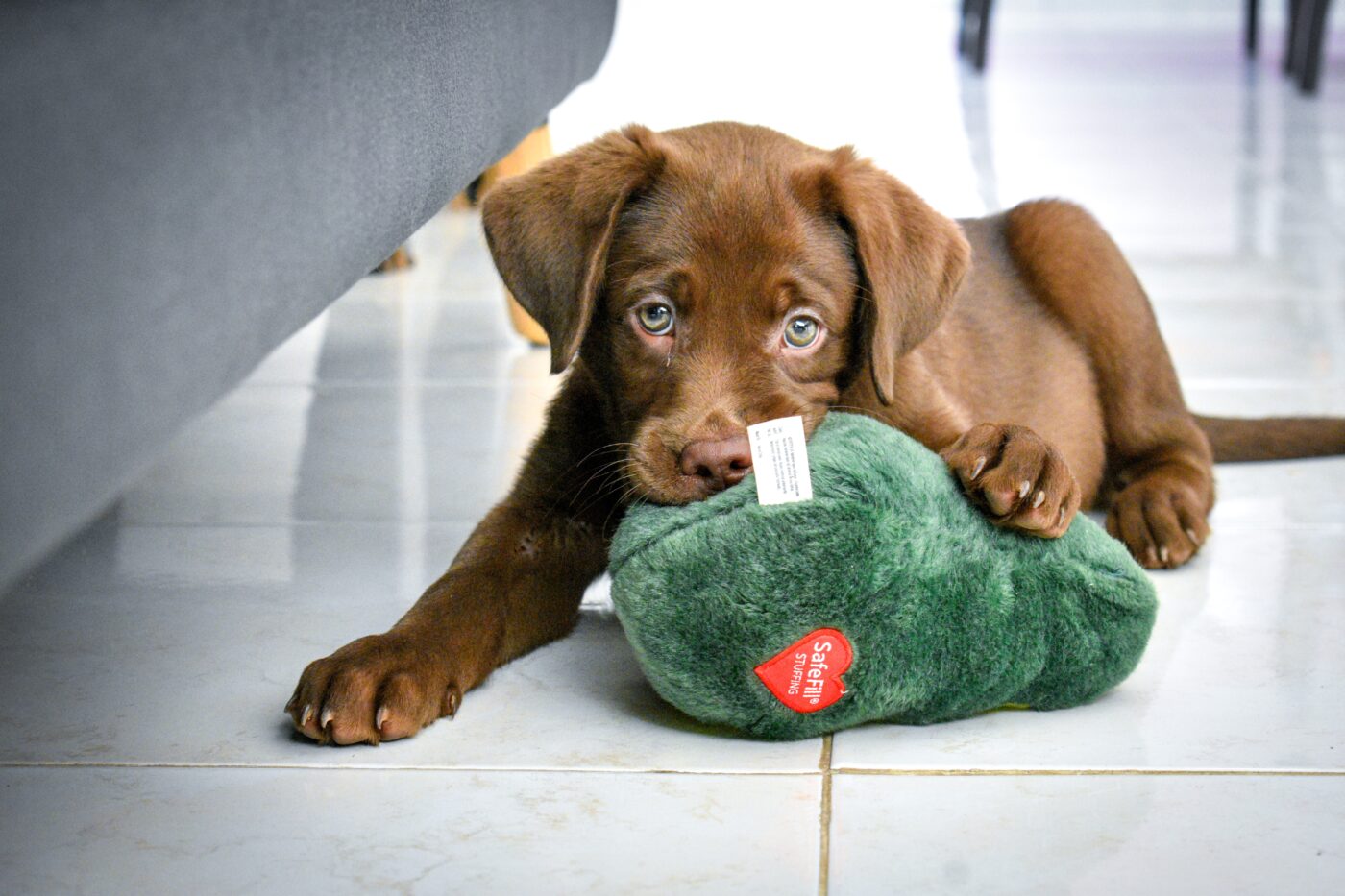
Below are some steps to follow when potty-training a new puppy. If you need some additional help with potty training, this resource explains in more detail how to potty train your puppy.
- Take your puppy outside frequently, approximately every hour during the day.
- Offer praise and treats when they use the bathroom in the correct spot.
- Maintain consistency and patience throughout the training process.
First Night Sleeping Arrangements
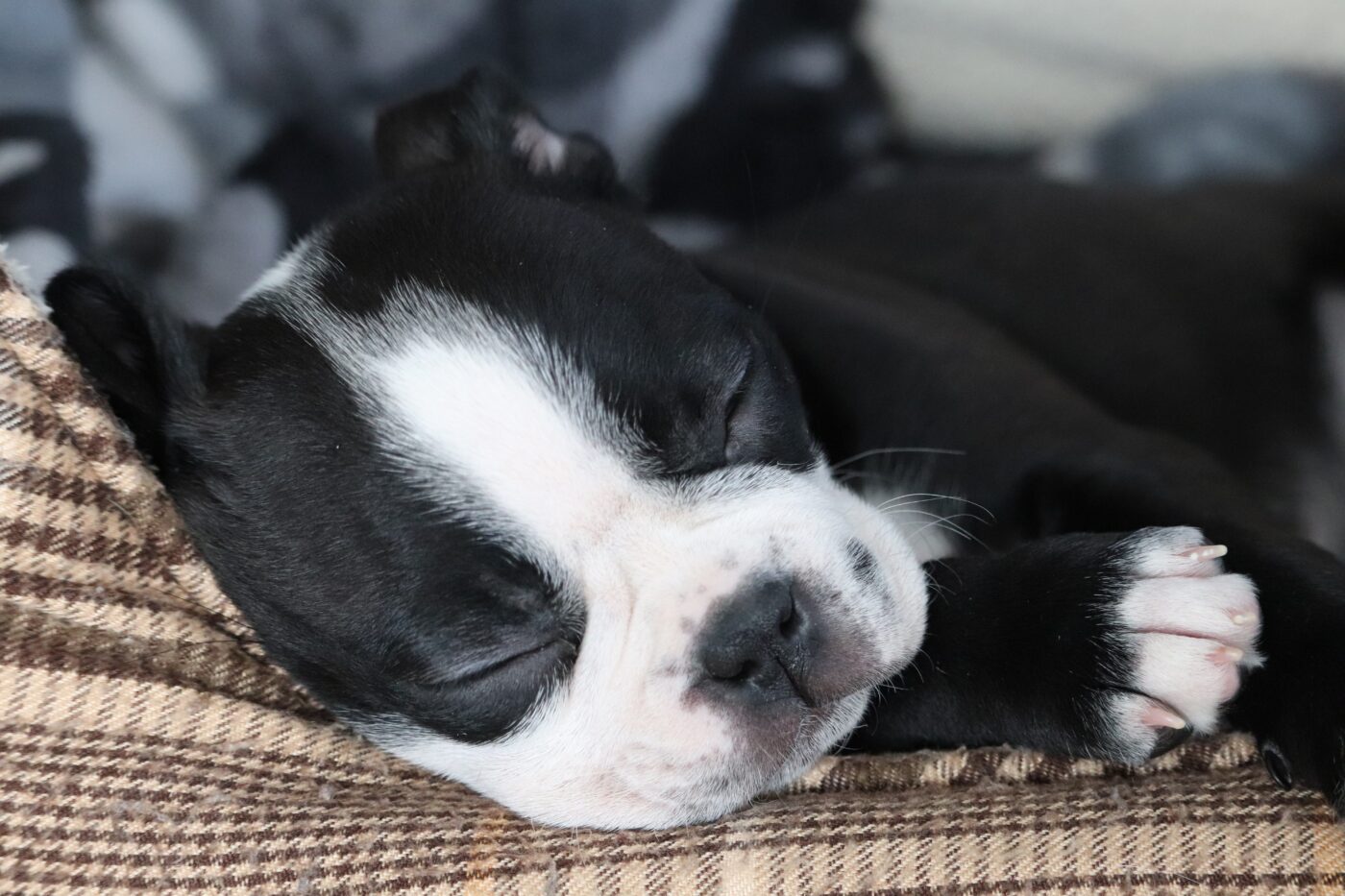
- Set up a designated sleeping area, such as a crate or dog bed, in a quiet room near your sleeping area.
- Monitor and respond to nighttime needs, including potty breaks or comfort.
- Avoid using the crate as punishment; associate it with positive experiences.
Kennel Training A Puppy

- Use a Kennel for Training:
- Helps with house training and provides a safe sleeping space.
- Prevents accidents and destructive behavior when unsupervised.
- Choose a Quality Kennel:
- Select a well-designed, safe, and comfortable kennel for your puppy.
- Consider The Dog Kennel Collection for stylish and durable options.
Be Patient

- Expect Challenges:
- Potty training accidents and chewing mishaps are normal.
- Stay calm and consistent during training.
- Positive Reinforcement:
- Use treats, praise, and rewards for good behavior.
- Avoid physical punishment, which can cause fear and anxiety.
Teach Your New Puppy Not to Bite

- Redirect Chewing:
- Provide chew toys or treats to redirect your puppy from chewing on inappropriate items.
- Understand Puppy Behavior:
- Differentiate between aggressive biting and gentle mouthing.
- Reinforce proper behavior with consistency and patience.
Use Treats as Rewards

- Choose the Right Treats:
- Opt for healthy and nutritious options appropriate for your puppy’s size and weight.
- Experiment with flavors to find your puppy’s favorite.
- Limit Treat Use:
- Avoid overusing treats to prevent obesity.
- Gradually reduce treat use as your puppy learns commands.
Begin Socialization
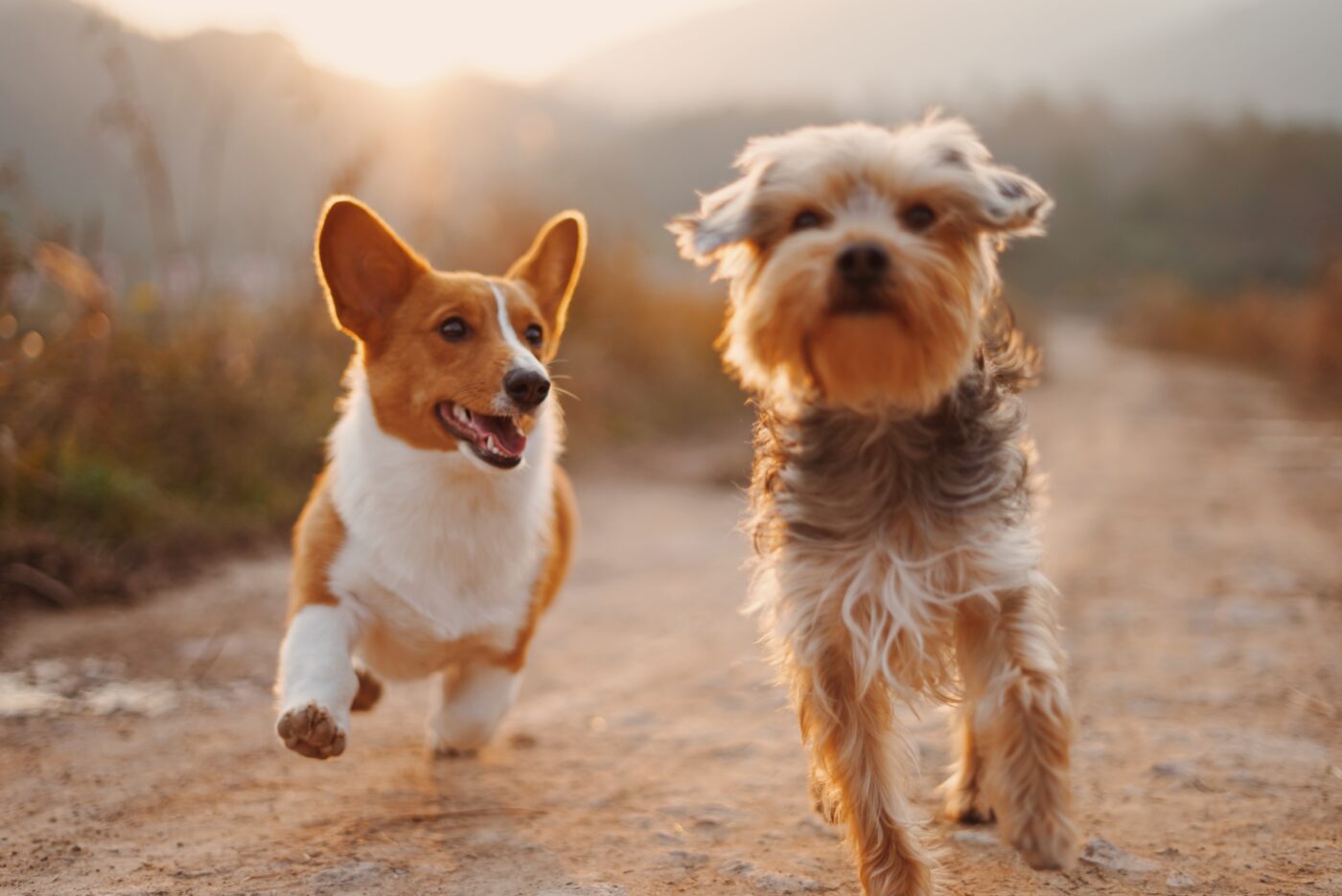
- Start Early:
- Introduce your puppy to humans, animals, and various environments.
- Expose to New Experiences:
- Take your puppy to parks, pet stores, and busy streets to acclimate them to different settings.
- Socialize with Other Animals:
- Arrange playdates or visit dog parks to develop their social skills.
Choose a Recall Word
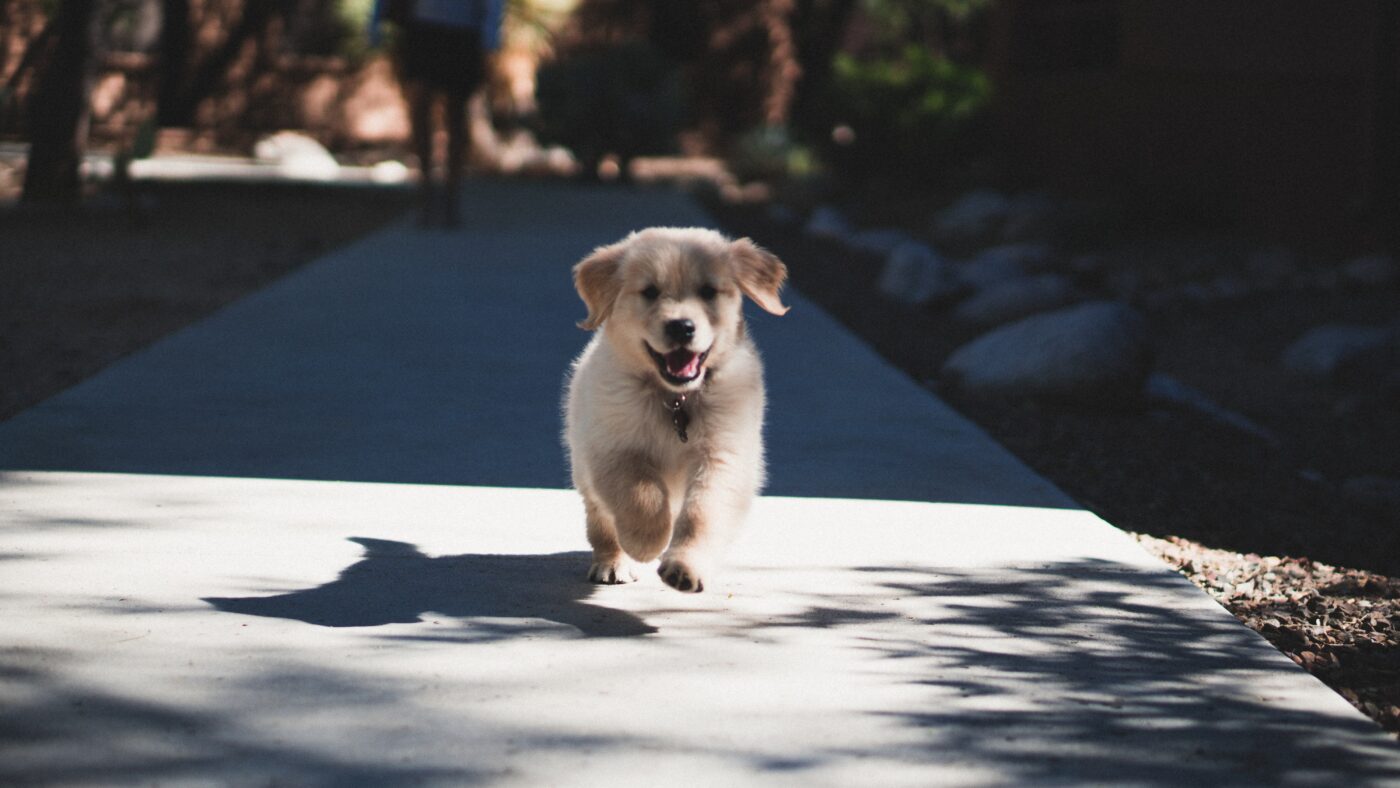
- Select a Unique Word:
- Pick a recall word or sound (e.g., “come” or a whistle) that immediately gets your puppy’s attention.
- Practice Regularly:
- Use the word consistently to build a strong association.
Develop a Routine

- Create Consistency:
- Set regular mealtimes and exercise schedules.
- Invest time in training and bonding with your puppy.
- Build Comfort:
- Gradually help your puppy feel at home by establishing predictable routines.
Follow this new puppy checklist for a successful journey with your new addition. Download the checklist below to guide you through the new puppy checklist!
More FAQs | New Puppy Checklist

1. How long is a puppy a puppy?
A puppy is considered a puppy until around 12 to 18 months of age, depending on the breed. Smaller breeds tend to mature faster and may reach adulthood by 12 months, while larger breeds can take up to 18 months or even two years to fully mature. Although physical growth typically slows by this time, puppies may still show youthful energy and behavior beyond their first year. Emotional and social development can also continue during this period, making proper training and care essential throughout their “puppy” phase.
2. When do puppies know their owner?
One of the first things to note in the new puppy checklist is bonding. Puppies start to recognize and differentiate their owners from other people at around 8 to 10 weeks of age. This is also around the time when they start to bond with their owners and form strong attachments. It’s important to spend quality time with your puppy during this critical socialization period, as it helps to strengthen the bond between you and your pup. Consistent positive experiences with their owner, such as playtime, training sessions, and cuddles, help to reinforce the bond and solidify your pup’s recognition of you as their owner. The bond between a puppy and its owner can continue to strengthen and deepen as the pup grows and matures.
3. When do puppies learn their name?
Puppies usually begin to learn and respond to their name between 6 to 8 weeks of age. At this stage, they are developing cognitive abilities and can start recognizing sounds, including their name. Consistent use of their name during positive interactions, such as feeding, playtime, and training, helps reinforce this learning. Repetition and rewards like treats or praise make it easier for your puppy to associate their name with attention and good things. With consistent practice, most puppies will reliably respond to their name within a few weeks.
4. Do puppies have separation anxiety?
Yes, puppies can experience separation anxiety, especially when they first adjust to being away from their mother and littermates. When left alone, symptoms may include excessive barking, whining, or destructive behavior. To help prevent this, gradually accustom your puppy to being alone by starting with short separations and providing a safe space with comforting items.
5. Should I Ignore my Puppy Crying at Night?
A common question in any new puppy checklist is how to handle nighttime crying. While it may be tempting to ignore your puppy’s cries, this isn’t recommended. Ignoring your new puppy’s cries at night can be tempting, especially when you’re tired, but it’s not the recommended approach. Crying is a common behavior in puppies as they adjust to their new surroundings, and it can be a sign of discomfort, fear, or separation anxiety. Ignoring the cries can reinforce the behavior and make it harder to resolve in the long run. Instead, it’s recommended to provide a comforting and consistent response, such as taking the puppy outside for a potty break or offering a toy or treat.
Your puppy will soon learn that crying does not result in attention and will instead begin to settle down and rest quietly. However, if the crying persists and appears to be a sign of distress, it may be helpful to speak with a veterinarian or a professional dog trainer for guidance. Remember to always be patient and consistent with your new puppy, and provide plenty of positive reinforcement and comfort to help them adjust to their new home.
6. How do you train your puppy to roll over?
Training your puppy to roll over can be a fun and rewarding experience! Here’s a simple step-by-step guide:
- Get Your Puppy’s Attention
- Start with a “Down” Position
- Introduce the Roll Over Command
- Guide Them with the Treat
- Add a Cue Word
- Practice and Reward
- Be Patient
Make Caring For Your Dog Simple

The Dog Kennel Collection offers a wide range of high-quality outdoor kennels, designed to meet the unique needs of your pup. With our kennels, you can let your furry friend enjoy the outdoors without worrying about their safety. Features like climate control and easy-to-clean wash-down solutions ensure your dog’s space stays warm, secure, and hygienic.
We’ve partnered with Backyard Pet Supplies to make pet care even easier. Whether you need a leash, food and water dishes, grooming tools, or other dog or puppy care essentials, we’ve got you covered. Our mission is to simplify caring for your pets so you can focus on enjoying your time together.
Not sure which kennel is the best fit for your dog? Contact us! We’re here to help you design the perfect kennel, tailored to your dog’s specific needs.
